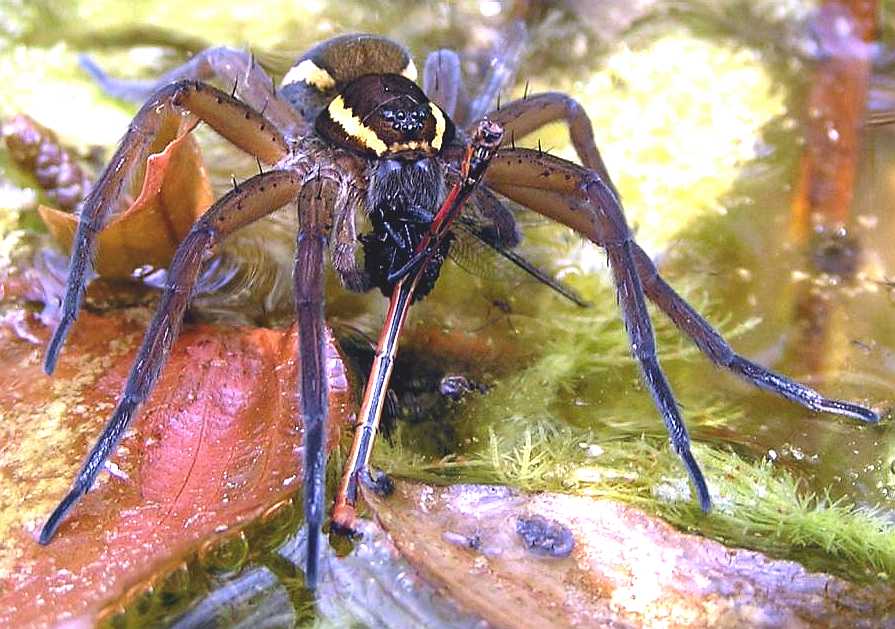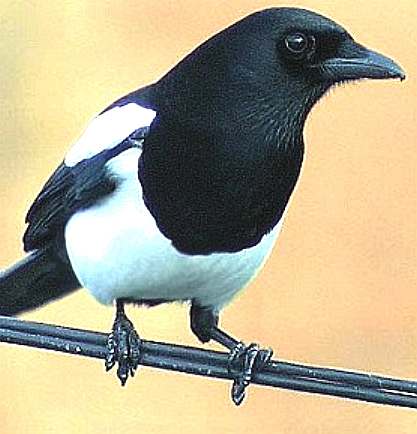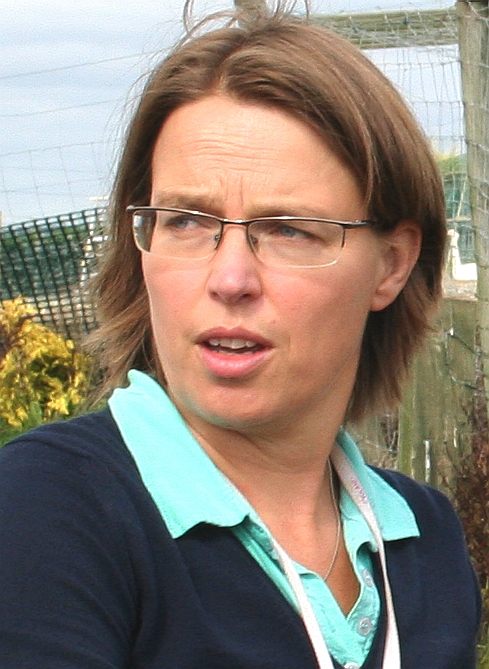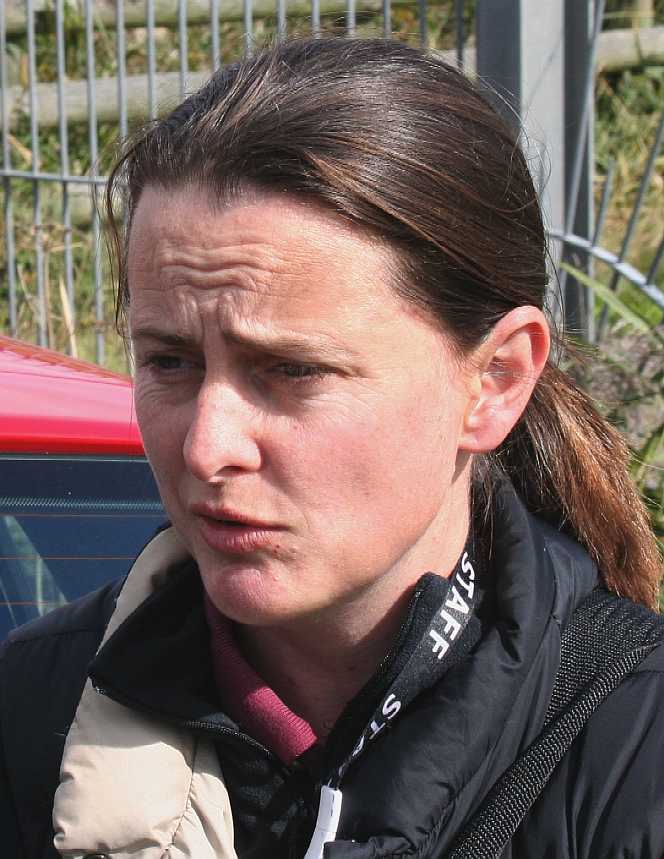|
SITES of SPECIAL SCIENTIFIC INTEREST
|
||
|
SSSI - SITE of SPECIAL SCIENTIFIC INTEREST
These sites take up land that may be suitable for sustainable development for humans. That said, sites that are said to be of Special Scientific Interest, should be avoided like the plague. Even where there are no species to protect, Natural England will hound an owner and then feast over his or her carcass - with costs and fines. To all extents the land is worthless. It will cost more to administer than it may be worth for grazing. To challenge an SSSI is far too expensive and the civil servants who operate for Natural England may lie as to scientific value, to protect their jobs, build their part and worse, interfere with nature - in trying to increase numbers of species, where that in un-natural. It sounds harsh, but it is true, keeping land artificially rated scientifically is keeping land that would be available cheaply off the market.
WHAT IS AN SSSI?
A Site of Special Scientific Interest (SSSI) is a conservation designation denoting a protected area in the United Kingdom. SSSIs are the basic building block of site-based nature conservation legislation and most other legal nature/geological conservation designations in Great Britain are based upon them, including National Nature Reserves, Ramsar Sites, Special Protection Areas, and Special Areas of Conservation.
SSSI SELECTION and CONSERVATION
Sites notified for their biological interest are known as Biological SSSIs, and those notified for geological or physiographic interest are Geological SSSIs. SSSIs may be divided into management units, with some SSSI areas including units that are notified for both biological and geological interest.
Fen Raft Spider - Pevensey Levels SSSI
BIOLOGICAL SSSIs
Biological SSSIs may be selected for various reasons, governed by published SSSI Selection Guidelines.
Within each area, a representative series of the best examples of each significant natural habitat may be notified, and for rarer habitats all examples may be included.
Sites of particular significance for various taxonomic groups may be selected (for example birds, dragonflies, butterflies, reptiles, amphibians, etc.)—each of these groups has its own set of selection guidelines.
Conservation of biological SSSIs usually involves continuation of the natural and artificial processes which resulted in their development and survival—for example, the continued traditional grazing of heathland or chalk grassland.
In England, the designating body for SSSIs, Natural England, selects biological SSSIs from within Natural Areas which are areas with particular landscape and ecological characteristics, or on a county basis. In Scotland, the designating authority is Scottish Natural Heritage; the role in Wales is performed by Natural Resources Wales (formerly the Countryside Council for Wales).
GEOLOGICAL SSSIs
Geological SSSIs are selected by a different mechanism to biological SSSIs, with a minimalistic system selecting one site for each geological feature in Great Britain. Academic geological specialists have reviewed geological literature, selecting sites within Great Britain of at least national importance for each of the most important features within each geological topic (or block). Each of these sites is described, with most published in the Geological Conservation Review series, and so becomes a GCR site. Almost all GCR sites (but no other sites) are subsequently notified as geological SSSIs, except some that coincide with designated biological SSSI management units. A GCR site may contain features from several different topic blocks—for example a site may contain strata containing vertebrate fossils, insect fossils and plant fossils and it may also be of importance for stratigraphy.
Geological SSSIs fall into two types, having different conservation priorities:
EXPOSURE SITES
These are where quarries, disused railway cuttings, cliffs or outcrops give access to extensive geological features, such as particular rock layers. If the exposure becomes obscured, the feature could in principle be re-exposed elsewhere. Conservation of these sites usually concentrates on maintenance of access for future study.
DEPOSIT SITES
LEGAL STATUS
Following devolution, legal arrangements for SSSIs (Scotland, England, Wales) and ASSIs (Northern Ireland) differ between the countries of the UK.
Scottish Natural Heritage publishes a summary of the SSSI arrangements for SSSI owners and occupiers (other than public bodies) which can be downloaded from the SNH website. Legal documents for all SSSIs in Scotland are available on the SSSI Register, hosted by The Registers of Scotland. Further information about SSSIs in Scotland is available on the SNH website.
The decision to notify an SSSI is made by the relevant nature conservation body (the appropriate conservation body) for that part of the United Kingdom: Northern Ireland Environment Agency, Natural England, Scottish Natural Heritage or Natural Resources Wales. SSSIs were originally set up by the National Parks and Access to the Countryside Act 1949, but the current legal framework for SSSIs is provided in England and Wales by the Wildlife and Countryside Act 1981, amended in 1985 and further substantially amended in 2000 (by the Countryside and Rights of Way Act 2000), in Scotland by the Nature Conservation (Scotland) Act 2004 and in Northern Ireland by the Nature Conservation and Amenity Lands (Northern Ireland) Order 1985. SSSIs are also covered under the Water Resources Act 1991 and related legislation.
An SSSI may be made on any area of land which is considered to be of special interest by virtue of its fauna, flora, geological or physiographical / geomorphological features.
SSSI notification can cover any "land" within the area of the relevant nature conservation body, including dry land, land covered by freshwater. The extent to which an SSSI/ASSI may extend seawards differs between countries. In Scotland an SSSI may include the intertidal land down to mean low water spring or to the extent of the local planning authority area, thus only limited areas of estuaries and coastal waters beyond MLWS may be included. In England, Natural England may notify an SSSI over estuarial waters and further adjacent waters in certain circumstances (section 28(1A & 1B) of The Wildlife & Countryside Act 1981 as amended by Part 2 of Annex 13 of The Marine & Coastal Access Act 2010).
Access on to SSSIs is the same as for the rest of the countryside of the relevant country. Most SSSIs/ASSIs are in private ownership and form parts of working farms, forests and estates. In Scotland, people may use their rights of responsible access to visit SSSIs.
When designating an SSSI/ASSI, the relevant nature conservation body must formally notify the interested parties and allow a period for them to make representations before confirming the notification. When creating a new SSSI/ASSI the designation hs legal effect from the date of notification. The interested parties include central government, local planning authorities, national park authorities, all the owners and occupiers of the land, relevant public bodies such as the utility providers e.g., water companies. In Scotland, Scottish Natural Heritage must also notify the relevant community councils and community group having registered an interest in the land.
The notification includes a description of the land and the natural features for which it is notified ("the citation"), a boundary map, and a list of the acts or omissions (activities) that the nature conservation body regulates through the issue of consents.
The various laws protect the interest features of SSSIs from development, from other damage, and (since 2000 in England) also from neglect. Protection is not necessarily absolute—generally it requires the SSSI interest to be considered properly against other factors.
Local planning authorities are required to have policies in their development plans which protect SSSIs. They are then required to consult the appropriate conservation body over planning applications which might affect the interest of an SSSI (such a development might not be within or even close to the SSSI itself). The effect of this is to prevent development which harms the interest — except where the value of that interest is over-ridden by some more important factor, for example a requirement for a major road or port or oil pipe. The requirement for consultation covers any development which might affect the interest, not just developments within the SSSI itself — for example, a development a long way upstream of a wetland SSSI might require consultation. Note that some developments might be neutral or beneficial, even if they are within the SSSI itself — the critical point is whether they harm the interest features.
The owners and occupiers of SSSIs are required (Scotland, England, Wales) to obtain consent from the relevant nature conservation body if they want to carry out, cause or permit to be carried out within the SSSI any of the activities listed in the notification. Formerly these activities were called 'potentially damaging operations' or PDOs. Under the current legal arrangements they are called 'operations requiring consent' or ORCs (Scotland), or 'operations likely to damage the SSSI interest' or OLDs (England & Wales?).
The list of ORCs/OLDs for each SSSI is unique to that site - though all are derived from a standard list for that country. The ORCs/OLDs are not "banned" activities — the list includes activities which would damage the interest, but also many which might be beneficial. For example, "grazing" (a standard item on the list) would require consent, even on a chalk grassland or heathland where grazing is an essential part of management. In England (and Wales?) the list of OLDs is almost the same for each SSSI — and the list for an SSSI will only omit activities impossible on the particular SSSI (such as fishing where there is no water), and things requiring planning permission (which are covered by the local planning authority consultation process). In Scotland, and following the implementation of the Nature Conservation (Scotland) Act 2004, Scottish Natural Heritage reviewed the ORC lists for each SSSI and removed those activities that were unlikely to happen and if they were to would be unlikely to damage the protected natural features, and other activities adequately regulated by other statutory regimes. The intention of this was to remove the need for owners and occupiers to obtain SSSI consent as well as licences/ permits from other authorities (who must consult SNH prior to determining such applications). Purely geological SSSIs often have much shorter OLD lists.
If a proposed activity would not affect the interest or is beneficial to it, then the conservation body will issue a "consent" allowing it to be carried out without further consultation. If it would be harmful, the conservation body may issue consent subject to conditions or refuse the application. If consent in writing is not given the operation must not proceed. Conditions may cover any relevant aspect of the proposed operation and may, for example, limit its timing, location or intensity. The process is slightly different where the owner or occupier is a public body, but the effect is broadly similar.
The relevant nature conservation body sends all SSSI owners and occupiers a site-specific 'site management statement' describing the ideal management (there may be grants available to help fund management). Owners and occupiers are encouraged to carry out this management, which in many (but not all) cases will be a continuation of the historical management of the land. Where an owner or occupier is unwilling or unable to carry out management, ultimately the conservation body can require it to be done. Public bodies which own or occupy an SSSI have a duty to manage it properly. Site management statements for SSSI in Scotland are available to download from the SNH website using the SNHi facility.
The law protecting SSSIs now covers everyone, not just public bodies and the owners and occupiers of SSSIs. Previously, activities by "third parties" were not illegal under the SSSI legislation. This meant that damaging activities such as fly-tipping, intensive bait-digging or trail biking on an SSSI were only prevented if done (or permitted) by the owner or occupier — not if done by trespassers or under public rights. The effect was, for example to allow control of legal trail biking on SSSIs (where damaging to the interest), but not illegal trail biking. This loophole was closed by the Countryside and Rights of Way Act 2000 and section 19 of the Nature Conservation (Scotland) Act 2004.
Magpies are on the increase at Pevensey Levels, so are Foxes. Both of these scavengers feed on Lapwing eggs and hatchlings. The reduction in Lapwings at the Pevensey Levels is cause for de-notification and/or a new definition as to boundaries. This information was kept from the Court in September of 2013, but should properly have been put before District Judge Stephen Nicholls, when he was ladling out fines for so-called breaches of the Wildlife Act, that in reality were causing no harm whatsoever. On the contrary the works Natural England were complaining of, were for the most part helping birds and insects in the area.
NOTIFICATION
New SSSIs
The process of designating a site as a Special Scientific Interest is called notification; this is followed by consultation with the site's owners and occupiers, and the notification is then confirmed or withdrawn (in whole or part).
RENOTIFICATION
AREAS OF SEARCH
For the purposes of selecting candidate SSSIs, Natural England and its predecessors use a system termed "Areas of Search" (AOSs). In England these are largely based on the 1974–1996 administrative counties (with larger counties divided into two or more areas), whereas in Scotland and Wales they are based around districts. The individual AOSs are between 400 km2 (150 sq mi) and 4,000 km2 (1,500 sq mi) in size. There are 59 AOSs in England, 12 in Wales, and 44 in Scotland. Watsonian vice-counties were formerly used for selection over the whole of Great Britain.
RECENT CASE HISTORY
The Natural England Board has corporate responsibility for ensuring that Natural England fulfils the aims and objectives set by the Secretary of State. The main roles of the Board are to establish Natural England’s strategy, approve direction and review performance of the organisation. As a local and national authority, they are bound by Section 6 of the Human Rights Act 1998, being that they must not violate any of the Articles of the European Convention. In particular they must act without discrimination and fairly, such as to comply with Articles 14 and 6.
There have though been cases where bias has been a feature of case handling. We are following a live case at the moment, being handled by Cath Jackson and Sue Beale, where permissions had been agreed and a landowner at great financial cost made adjustments, but then having agreed those adjustments would be acceptable, Natural England then sought to prosecute the landowner, even where he had permission from the local council for certain works, and there was no danger to any wildlife being caused by other works, which were to protect grazing animals, that otherwise might escape and either drown, or become a danger to nearby road users.
Such measures are legal at all times according to the Wildlife and Countryside Act 1981. But it is misfeasance in public office, if one does not do what the position of office requires. In addition, Section 4 of the Fraud Act 2006 may apply where an officer of Natural England fails to perform a duty, with the intention of causing a person loss, or even if the failure puts the target at risk as to loss. All of this raises serious questions as to the manner of operating of Natural England officers. That the target is not native to England may also be a live issue - as in Jones v. Swansea City Council [1990] 1 W.L.R.
Sue Beale (left) and Cath Jackson (nee Laing, right) - on site Friday the 20th September 2013.
DISCRIMINATION and MISFEASANCE in PUBLIC OFFICE
Natural England have refused to indemnify a landowner, should any of their requirements cause him loss. While requiring the landowner, to, in effect, cease farming. Natural England have made no offer of compensation under the Agri-Environment Scheme, as to the implied message.
The site in question is claimed to still have significant numbers of Lapwings, according to their pet ornithologist, Allan Drewitt, who on Monday the 23rd of September 2013, told District Judge Stephen Nicholls that in his opinion fencing near Wartling village would have an effect on the nesting of the species. In reality, fencing in that location is commonly thought to have no effect whatsoever, mainly because Lapwings like open spaces - and in this location the plot in question is bounded by other plots with fences. Hence, Lapwings would go nowhere near - according to Mr Dewitt's own admission as to the species preferences.
It was alleged that Natural England were deliberately not keeping SSSI information up to date, so that when giving evidence, so called independent experts, could pull-the-wool over the eyes of the Judge. How a witness can be independent and be employed by the organisation bringing the case is beyond us. Clearly, if someone is called to give evidence by their boss, he or she is bound to answer as their employer would want.
Ignoring fences for now, it is a fact that the area in question is overrun by Magpies. Magpies are known to feed on the eggs of other birds and their young. Our operative counted 21 magpies during an early morning drive along the Pevensey Levels. The area is literally overrun by them, and now apparently, the giant fen raft spider.
According to Mr Drewitt, the numbers of Lapwings in 1990 were 6,000 birds, reducing to 3,500 birds by 2008. In this case, although Judge Nicholls asked some questions as to the position with up to date statistics. Allan Drewitt simply referred to the out of date statistics. To our mind that is a failure to advise. In a criminal court, a failure to advise may be quite a serious matter - as per the Fraud Act 2006: "an omission that might cause loss to another."
Natural England do not like the public having knowledge of raw data for any area, which seems to us to be to keep artificial controls alive on sites that are no longer of any scientific interest. How this might affect their funding from central government, or even the European Union is a matter for investigation. The advantages to secrecy is that Natural England would keep all their nice cozy jobs, and benefit from funding that they were not entitled to. In addition, they would then be able to avoid paying compensation to farmers, where NE might like to use land to try and increase numbers of rare birds.
Increasing number of animal unnaturally is not the function of Natural England (NE) and is an interference with nature, which in this case seems to be taking its own course despite the intervention of NE. Letting nature take its course is a view shared by English Heritage, when it came to cliff erosion, and refusing to shore up chalk cliffs to prevent coastguard cottages falling into the sea.
DUTY TO THE PUBLIC
There are though common law and statutory duties, that Natural England are bound by. In this case it is to monitor areas effectively, such that when an SSSI is no longer important, that that designation is removed. For, if it is not it is then unlawfully restricting the peaceful enjoyment of land in violation of Article 8 and Protocol 1, Article 1. To seek to prolong an untruth is in our view an unsustainable practice.
Where Natural England are sloth for the purposes of fooling the public, that is of course fraud, as defined in Sections 2, 3 and 4 of the Fraud Act 2006.
Gregory Barker MP for Battle
COMPENSATION TO FARMERS
Compensation Schemes are publicly-funded and provide payments to farmers who, in return, agree to manage their land for the benefit of the environment. In this case the landowner is doing his bit, but Natural England are not prosecuting the agency responsible for flooding, and that flooding has materially altered the status of the land when it comes to special scientific interest.
Where Natural England have not even advised the landowner of such compensation schemes, and refused to indemnify in case of livestock escaping, etc, we suspect discrimination is the root cause of their behaviour - perhaps giving in to public pressure, instead of doing their job properly.
The identity of the landowner is protected, but one of our operatives has visited the site in question (overtly) and provided us with verifiable facts in the form of photographic evidence, as to the excellent condition of the land - save for the flooding - which is a live issue, and does not involve the subject, but is rather a matter of negligent land management on the part of environment agencies; to include Natural England. The pictures we now hold demonstrate that significant improvements have been made, bound to increase the natural habitats of local fauna, birds and spiders in particular. The case continues where documents have been provided late (years after requested), literally half a working day before the next hearing.
DELIBERATE FLOODING
It is alleged that another tactic adopted by Natural England is to flood a farmers land to make it worthless. How might they get away with that? Well, they would not install pumps to pump water onto the land, that would be an overt act and immediately injunctable? Instead, where a local pumping station controls water levels, instead of manning the pumps such as to manage the levels, they would simply not provide a man to ensure that the pumps were working correctly, so that more water was coming onto the land - for example to increase the numbers of Fen Raft spiders, now being bred for export from Sussex to other counties.
When giving evidence, Allan Drewitt confirmed that flooding the land would have the effect of increasing the attractiveness of the land for wading birds. We rest our case. If you search the web for a picture of Allan Drewitt, you will not find one. Does he have something to hide? Come on Allan, send us in a picture and please feel free to correct us on anything that you feel is not accurate.
If any member of the public can help us to clear up unresolved issues about the Pevensey Levels and lapwings and magpies, etc, we would be pleased to hear from you.
Andrew Hopkin and Jonathan Mitchell (Ropewalk Chambers) - Doing very nicely with costs of £90,000 in this case. That would feed a lot of starving children in Africa. But more likely fund a high carbon lavish lifestyle. How much were they asking for and how can anyone justify that kind of money for what amounts to reading some papers and speaking to a Judge? Costs are normally kept reasonable for criminal prosecutions. This is a loophole where Natural England clean up and in so doing ruin lives. They deliberately employ expensive lawyers from the other side of the country to bump up costs, regardless of carbon generation. Why not use local lawyers to save carbon miles?
NATURAL ENGLAND - LAWYERS
Andy Hopkin is a solicitor working with the firm of Browne Jacobson LLP, solicitors, and those instructing Jonathan Mitchell. Extraordinary as it may seem, it is alleged that a law firm working with Natural England is enjoying charging typically high lawyers fees, all the while Natural England have been "elaborating" charges (as in piling on offences), the net effect of which is to cause as much financial harm to the accused as possible. Remember, from above, that it is/was alleged that Allan Drewitt was not as forthcoming as he might have been about Magpies preventing Lapwings from nesting at the Pevensey Levels, or indeed any mention of other close by fences - and that he did not attend a criminal court with up to date information as to use of the site by lapwings. Allan Dewitt did not bring anything with him in fact, within 5 years of the last site survey - and of course magpies have decimated the SSSI, which should thus be re-defined. If it is that this conviction has been based on "junk-science" is it legal? And it looks that way to us - unless of course Natural England would now care to provide up to the minute data?
WEALDEN DISTRICT COUNCIL
We can confirm that in other cases we know of where Wealden District Council is an agency involved in the chain somewhere, that that is exactly the sort of tactics adopted. The aim is to win by attrition (especially where they have no leg to stand on in law), and where a person is well enough heeled that a fine might not be a noticeable dent in the bank balance, to wind up the costs to a level so that it hurts - and in some cases to a level which might bankrupt a person of limited means - which is in itself an Article 8 violation - and unlawful. Yet the courts are persuaded that this is morally acceptable. What has England become?
This practice is of course more than immoral, it is illegal if done deliberately, as in the offence of culpable overcharging. We know of one case where the hours charged for an officer's time was well in excess of the hours in the day/week that were possible to work. The well worn term: "blood-sucking-lawyers", is in some cases well deserved.
In a recent case in the Brighton Magistrates Court, lawyers claimed a high figure, which the Judge knocked down significantly. The question is, if a bill is knocked down that way, was the original figure sought, culpably overcharged, or an attempt to gain financially which may fall to be considered under the Fraud Acts?
Lapwings in Sussex enjoy a nice meal courtesy of Natural England
LINKS
http://www.dolomedes.org.uk/conservation/ukpops/pevensey.html http://en.wikipedia.org/wiki/Site_of_Special_Scientific_Interest http://www.uklandandfarms.co.uk/South-East-property.aspx http://www.uklandandfarms.co.uk/land-for-auction/key-agricultural-land/ http://www.charlesclark.co.uk/ http://www.duffyandco.com/ - Burgess Hill http://www.reiddean.com/ - Eastbourne http://www.freemanforman.co.uk/ - Heathfield http://www.parklanegroup.net/land-to-sell-in-east-sussex http://www.rightmove.co.uk/commercial-property-for-sale/Hastings/land.html http://www.landsourceplc.co.uk/land_for_sale.asp http://www.farminguk.com/propertiessearch http://www.smithsgore.co.uk/property-for-sale http://farmsandestatessearch.savills.co.uk/list/land-forestry-for-sale/uk/0/100000/0 http://farmsandestatessearch.savills.co.uk/ http://www.vantageland.co.uk/land-news.asp http://www.guardian.co.uk/business/2013/feb/15/rural-land-prices-new-high http://www.uklanddirectory.org.uk/land-values.asp
CLC
(Council Licensed Conveyancers) http://www.conveyancer.org.uk/
PROPERTY FINDER LINKS
GreenMoves - Dedicated 'eco property for sale' website. Pick Up a Property - A leading UK website for sourcing property in need of renovation.
|
||
|
This website is Copyright © 2013. All rights reserved. All other trademarks are hereby acknowledged. Contact Us www.cherrymortgages.com |







